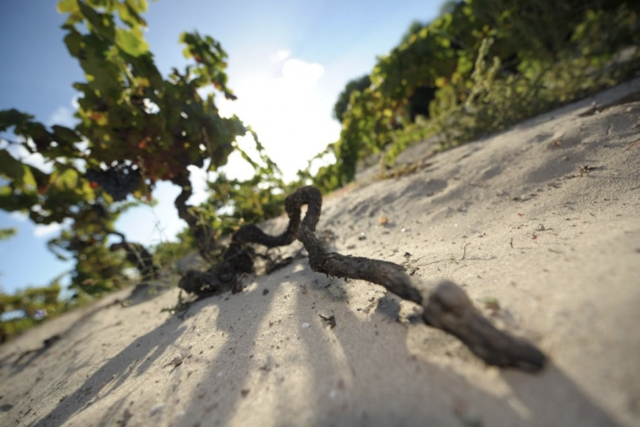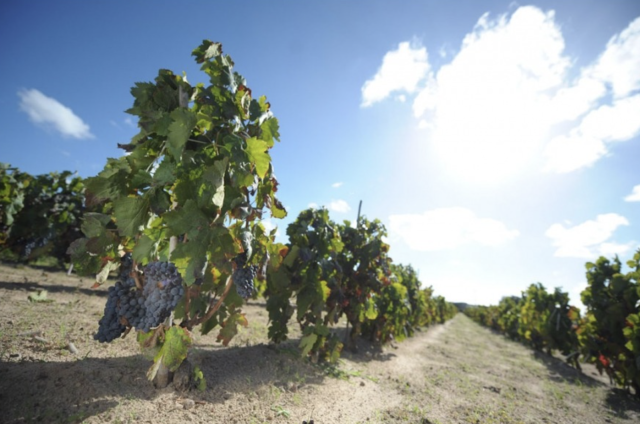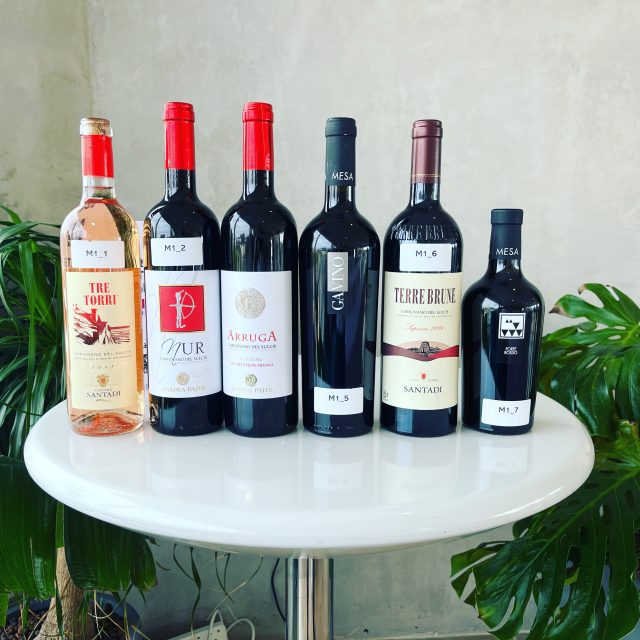This website uses cookies so that we can provide you with the best user experience possible. Cookie information is stored in your browser and performs functions such as recognising you when you return to our website and helping our team to understand which sections of the website you find most interesting and useful.
Why Sardinian Carignan deserves wider recognition
Carignan may be native to Spain, most prevalent in France, and gaining respect in Chile and California, but in Sardinia, this workhorse grape is a becoming a flagship variety – and there are good reasons for that.

In fact, Carignan – or Cariñena and Mazuelo as it’s known in its source area of Aragon in Spain – has its own appellation in Sardinia, where the grape is prized for first-rate wines in a range of styles, from rosés to barrel-aged reds, even sweet wines.
This was shown during a masterclass on 11 October, where the UK wine trade were offered a day of tastings beamed lived from Italy to London, as part of Milan Wine Week.
Among these was a showcase for Carignano del Sulcis DOC, an appellation in the southwest of Sardinia and its two nearby islands, San Pietro and Sant’Antioco.
The latter island, which is connected to Sardinia by a road bridge, is notable for its extremely sandy vineyards, although such soils can be found along all the coastal sites of the Carignano del Sulcis DOC.
Such a basis for vines is extremely important, because it has ensured the root-eating phylloxera louse that devastated the vineyards of Europe in the late nineteenth century has never been able to damage the plants in these seaside sites – the bug doesn’t like sandy soils.
As a result, this area of Sardinia is home to one of Europe’s largest collection of pre-phylloxera vines, which still thrive today, allowing vignerons in Carignano del Sulcis DOC to make wines from extremely old, deeply rooted, franco di piede (ungrafted) plants.
In essence, this means that the region is home to viticulture as it was practised 150 years ago, with ungrafted Carignano trained in the traditional Albarello system (pictured below).

Aside from these relic vineyards, Carignano del Sulcis DOC is notable for the style of wines that are produced, which range from easy-drinking light rosatos and reds, as well as rich, generous, age-worthy drops, along with intensely sweet passitos.
For a grape known in southern France, particularly the Languedoc, for its high yields, and somewhat tart and tannic reds, tasting Carignano del Sulcis is a revelation, as it can be fleshy and relatively concentrated, although there is always a strong, dry tannic component in the most powerful wines.
Helping Carginano achieve greatness is this part of Sardinia is not just the age of the vines, and nature of the soils, but also the climate, with hot, dry and windy conditions yielding concentrated, disease-free berries.
So, next time you consider Carignan or Mazuelo, remember that Sardinia is home to delicious and distinctive examples, celebrated as part of a special DOC carrying the grape’s name: Carignano del Sulcis.
I’ve picked out a few examples to try below, while fully aware that this grape does reach heights elsewhere in the world, notably Spain (Priorat, Rioja, Montsant, Aragon), France (Languedoc, Corbières-Boutenac), Chile (Vigno from Maule), South Africa (Pederberg) and California (Mendocino, Livermore).
Finally, how did Mazuelo end up in Sardinia – where, as Carignano, it is also sometimes called Bovale di Spagno? Well, as its Sardinian synonym suggests, it is believed that the grape was brought from its native home of Aragon by the Spanish, who ruled over the now Italian island from 1323 to 1720.
Over this near-500-year period, and then for the next 300 years, the grape has thrived, no doubt due to its ability to withstand Sardinia’s dry and hot climate, and ability to produced long-lived, stable, low-pH wines despite the harsh conditions – a result of its late-budding and late-ripening nature.

Cantina Santadi, Carignano del Sulcis DOC Rosato, Tre Torri, 2022
A pale peach wine with a slightly oily mouthfeel, and a finely-tannic, dry and fresh finish, featuring lingering flavours of pear, peach and white cherry, with a touch of apple-skin too.
Sardus Pater, Carignano del Sulcis DOC, Nur, 2021
An impressive, affordable (sub £20) red made from ungrafted vines – some of which are over 100 years old – grown on the sandy soils of Sant’Antioco, and made by the Cantina Sardus Pater cooperative. The palate is dense and fleshy, with prune, black cherry and sweet balsamic flavours, followed by persistent notes of cracked black pepper and dried herbs, and then a fresh, dry finish, featuring plenty of mouth-coating tannins.
Cantina Santadi, Carignano del Sulcis DOC Superiore, Terre Brune, 2019
A flagship Sardinian Carignano created by the late, great Italian wine consultant Giacomo Tachis, who worked with the Santadi cooperative from 1984. Using ungrafted ancient vines, and French oak barriques – where the wine ages for 18 months – this is a powerful, complex and impressive red with a relatively high price tag (around £55). Flavour-wise there is lots of sweet black cherry, prunes, tobacco and chocolate, with complementary notes of white pepper, bay and cedar, and then a long finish, with some warming alcohol, but also fresh plums, and fine, dry, dense tannins.
Mesa, Carignano del Sulcis DOC Passito, Forterosso, 2021
A fascinating sweet wine from Carignano made from dried grapes to yield something warming (15% abv) and rich, with notes of prunes and raisins, kirsch, some pepper, beeswax and acacia blossom, then a touch of candied orange and dry tannin to balance the intensely sweet mid-palate. An ideal pairing for Pecorino Romano DOP, 90% of which is produced in Sardinia.
Related news
A 'challenging yet surprising' vintage for Centre-Loire in 2024

